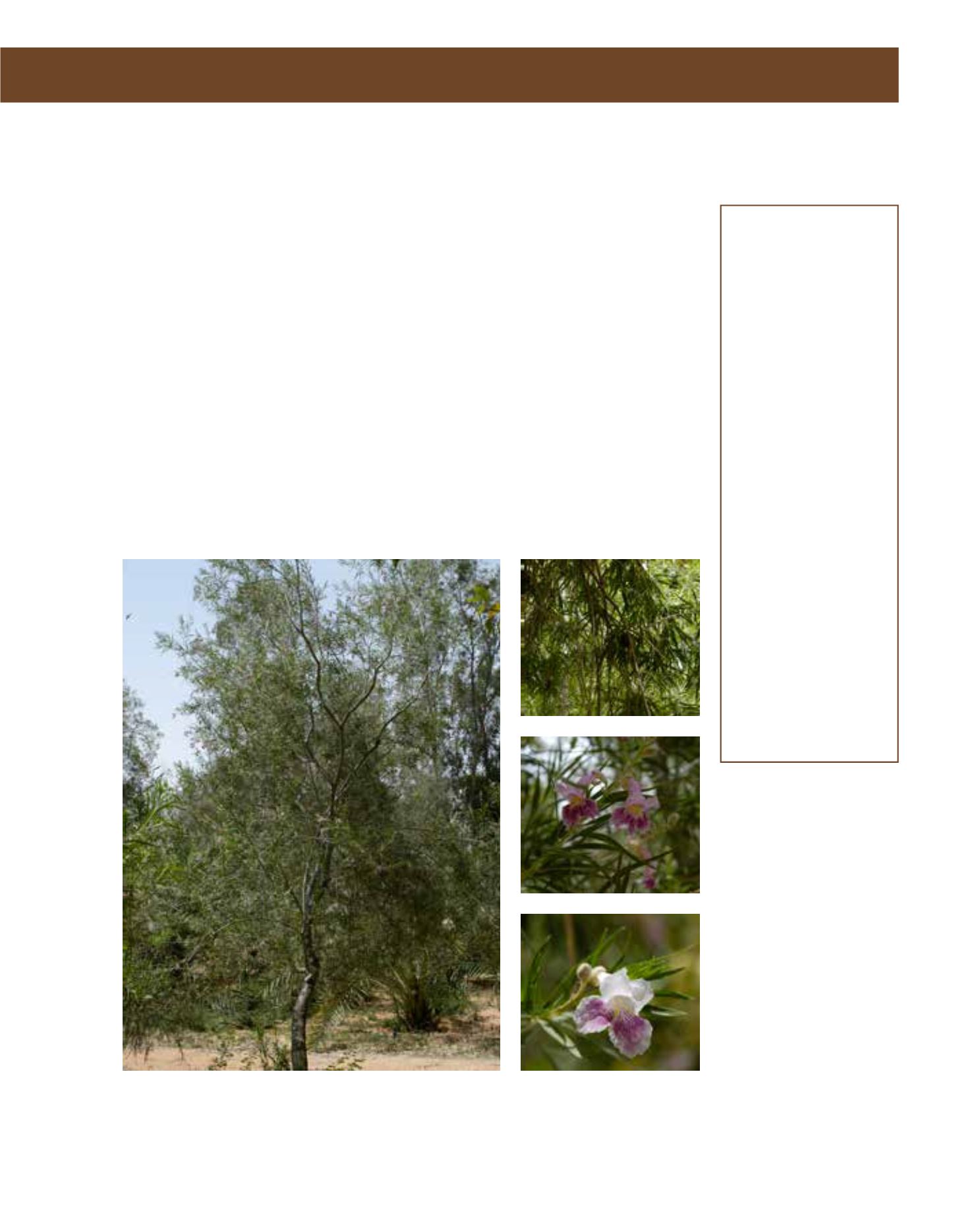

GENERAL
Origin
:
sub-tropical
Vigour
:
fast growing
Humidity
:
very arid, semi-
arid
Propagation :
sowing and
pricking out,
cuttings
Maintenance :
moderate
CONDITIONS
Urban climate :
resistant
Dessication :
resistant
Stagnant water :
vulnerable
Irrigation
:
low
Salinity/ppm :
moderate (1800
ppm)
Hardiness
:
-15°C
SHAPE
Type
:
tree, shrub
Height
:
5 m-9 m
Spread
:
4 m-9 m
Foliage
:
deciduous
FLOWER
Colour
:
white, pink,
purple
Size
:
3 cm
Period
:
March - July
Smell
:
scented, flower
FRUIT
Type of fruit :
capsule
Fruit size
:
10 cm - 30 cm
Toxicity
:
inedible
The desert willow, native to the U.S. Southwest and Mexico, is a graceful, deciduous, small tree
growing up to 9 metres high with a similar spread. Its habitat is drainage channels, foothills and
desert grassland at heights over 500 metres above sea level. Accordingly, it has good potential for
planting in the Arriyadh region. With moderate to fast growth, the tree has slender branches and
bright-green leaves 10 to 30 cm long. It bears terminal clusters of fragrant, funnel-shaped flowers
in shades of pink and lavender from spring to summer. Relatively frost-hardy, the Desert Willow
requires full sun and is very drought-tolerant: to improve its appearance and development, and
also to prolong flowering, it should be deep watered once a month in summer. C. linearis will
grow in most soils with good drainage. Propagation is by seed, cuttings, layering and grafting.
This is a low-maintenance tree, requiring occasional pruning for shaping. Seed and leaf litter
may be a problem, and, because it seeds easily, it may become invasive. This willowy tree with
an interesting trunk makes an effective accent or specimen or a loose background plant. It is
very attractive when planted in groups, and makes a pleasing textural contrast with other desert
vegetation.
100
Chilopsis linearis,
Bignoniaceae
Desert Catalpa,
Desert Willow
















